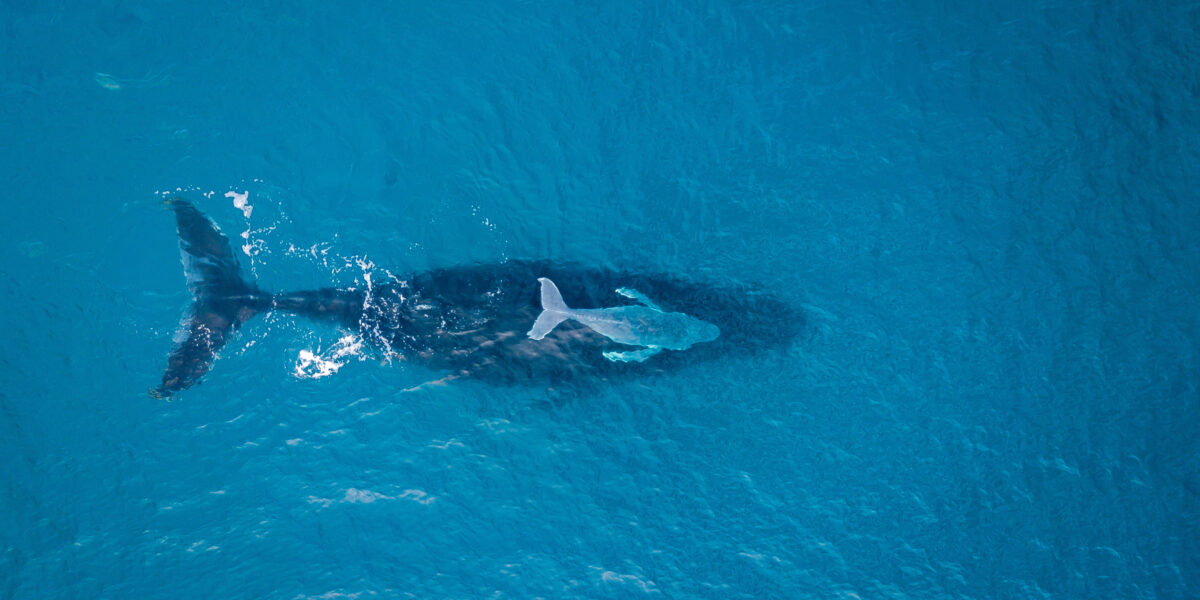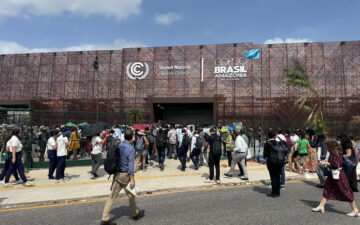Live animals store carbon. If you take a fish from the sea and eat it, the stock of carbon in that fish disappears from the ocean. Oceanic blue carbon refers to the natural ways that marine vertebrates (not just fish) can help trap and sequester carbon, potentially mitigating the effects of climate change.
In the ocean, carbon flows through the food web. It is first fixed through photosynthesis by phytoplankton on the surface. Through consumption, the carbon is then transferred and stored in the bodies of plant- eating marine life such as krill. Through predation, the carbon accumulates in larger marine vertebrates such as sardines, sharks, and whales.
Whales accumulate carbon in their bodies during their long lives, some of which stretch to 200 years. When they die, they sink to the bottom of the ocean, taking the carbon with them. Research shows that each great whale sequesters around 33 tonnes of carbon dioxide on average. A tree during the same period only contributes up to 3 per cent of the carbon absorption of the whale.
Other marine vertebrates store smaller quantities of carbon for shorter periods. Their total storage capacity is known as “biomass carbon”. Protecting and enhancing oceanic blue carbon stores in marine animals may lead to conservation and climate change mitigation benefits.
An exploratory pilot study has recently been conducted in the United Arab Emirates (UAE) to help understand potential oceanic blue carbon in addressing the global climate change challenge and in supporting sustainable fisheries and marine policy.
The UAE pilot project was commissioned by the Abu-Dhabi Global Environmental Data Initiative (AGEDI), and supported with co-finance from Blue Climate Solutions, a project of The Ocean Foundation, and the United Nations Environment Programme (UNEP) through GRID-Arendal, which implements and executes the Global Environment Facility Blue Forest Project.
The study utilized existing datasets and methods to quantify and assess the capacity for fish, cetaceans, dugongs, sea turtles, and seabirds inhabiting a section of UAE’s marine environment to store and sequester carbon.
“The analysis represents the world’s first oceanic blue carbon audit and policy assessment at the national level and will allow relevant policy and management entities in the UAE to evaluate options for the potential implementation of oceanic blue carbon policies at the local and national levels,” says Ahmed Abdulmuttaleb Baharoon, Acting Director of AGEDI. “This work is a strong recognition of the potential for the conservation and sustainable management of marine life to be recognized as an important nature-based solution to the global climate challenge,” he adds.
Biomass carbon is one of nine identified oceanic blue carbon pathways whereby marine vertebrates can mediate carbon storage and sequestration.
UAE oceanic blue carbon audit
One goal of the UAE study was to evaluate marine vertebrate biomass carbon stores with a focus on Abu Dhabi emirate, for which most pre-existing data was available.
Biomass carbon storage potential was assessed in two ways. First, lost biomass carbon storage potential was estimated by analysing fisheries catch data. Second, current biomass carbon storage potential (i.e., biomass carbon standing stock) for marine mammals, sea turtles and seabirds was estimated by analysing abundance data. Due to a lack of data on fish abundance at the time of analysis, fish were excluded from estimates of biomass carbon standing stock, but these data should be included in future studies.
The study estimated that during 2018, 532 tonnes of biomass carbon storage potential was lost due to fisheries catch. This is nearly equivalent to the current estimated 520 tonnes of biomass carbon standing stock of marine mammals, sea turtles, and seabirds in Abu Dhabi emirate.
This biomass carbon standing stock is composed of dugongs (51%), sea turtles (24%), dolphins (19%), and seabirds (6%). Of the 66 species analysed (53 fisheries species, three marine mammal species, two sea turtle species, and eight seabird species) in this study, eight (12%) have a conservation status of vulnerable or higher.
“Biomass carbon – and oceanic blue carbon in general – is just one of many ecosystem services provided by these species and thus should not be viewed in isolation or as a replacement for other conservation strategies,” says Heidi Pearson, a marine mammals expert of the University of Alaska Southeast and lead author of the biomass carbon study.
“Protection and enhancement of marine vertebrate biomass carbon stores can potentially be one of many strategies for conservation planning and climate change mitigation in the UAE,” she adds.
“The results confirm the great ecological value of whales and other marine life to help mitigate climate,” says Mark Spalding, President of The Ocean Foundation. “It is critical that the global community considers this evidence as part of their ongoing efforts to manage and recover marine life and address global climate change,” he adds.
Oceanic blue carbon policy assessment
Another goal of the project was to explore the viability of oceanic blue carbon as a policy tool to support the sustainable management of marine resources and fight climate change.
The study also surveyed 28 coastal and marine environmental stakeholders to assess knowledge, attitudes, and perceptions of the concept of oceanic blue carbon and its relevance to policy. The policy assessment found that the application of oceanic blue carbon policy has significant policy relevance to the areas of climate change, biodiversity conservation, and fisheries management in national, regional, and international contexts.
“The vast majority of survey participants agreed that international recognition of the value of oceanic blue carbon should be increased and that it should be incorporated into strategies for conservation and climate change mitigation” says Steven Lutz, a blue carbon expert at GRID-Arendal and lead author of the policy assessment. “Notwithstanding the imperative to reduce carbon emissions, this research confirms that marine conservation as a climate mitigation strategy is viable, will likely be well received and has great potential,” he adds.
“These findings are the world’s first of their kind and considerably contribute to conversations about ocean conservation and management in the context of climate change mitigation,” says Isabelle Vanderbeck, a marine ecosystems expert with the United Nations Environment Programme (UNEP).
“Oceanic blue carbon can be one component of a suite of data used in the development of climate change mitigation strategies, sustainable fisheries, conservation policy, and marine spatial planning. This research significantly bridges the gap between marine conservation and climate change policy and is potentially very relevant to ocean actions expected to be discussed at this year’s United Nations climate change conference in November,” she adds.
The United Nations Decade of Ocean Science for Sustainable Development (2021-2030) proclaimed in December 2017, will provide a common framework to ensure that ocean science can fully support countries’ actions to sustainably manage the oceans and more particularly to achieve the 2030 Agenda for Sustainable Development.
For more information, please contact Steven Lutz (GRID-Arendal): [email protected] or Gabriel Grimsditch (UNEP): [email protected] or Isabelle Vanderbeck (UNEP): [email protected]






